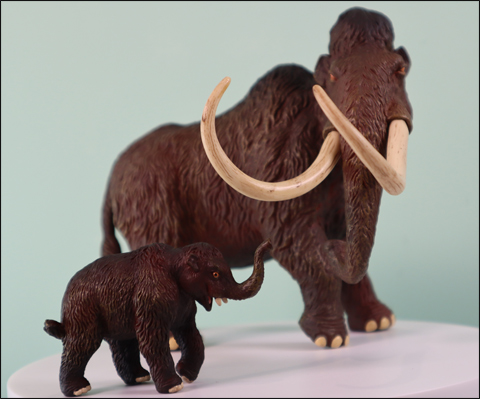Prehistoric Mammoth Site Opens to Public
Columbian Mammoth Site Opened to Public
On Saturday, residents of and visitors to Waco in Texas had the chance to get up close and personal to the remains of a number of huge Mammoths as a palaeontological dig site was opened up to the public for the first time.
Prehistoric Mammoth
The Waco Mammoth Site showcases the remains of Columbian Mammoths that died in mudslides and flooding more than 60,000 years ago. The Columbian Mammoth (Mammuthus columbi) is a species of prehistoric elephant closely related to their more famous cousins the Woolly Mammoth. These animals thrived in the warmer temperate regions of the United States during the Pleistocene Epoch. Columbian Mammoths were slightly larger than most Woolly Mammoth types (M. primigenius) and they had slightly less body hair, an adaptation to a warmer habitat.
Visitors to the this new site can walk through a climate-controlled pavilion built over the excavations and watch from walkways as guides explain the story of how these Mammoths came to be buried together. This marks the completion of the first phase of development, a total of $4 million USD was raised by the Waco Mammoth Foundation. It is hoped that this site will be recognised as a national monument by Congress. and given national park status.
A Model of a Woolly Mammoth and a Juvenile

The CollectA Deluxe Woolly Mammoth model in 1:20 scale and the CollectA Prehistoric Life Woolly Mammoth calf. Picture credit: Everything Dinosaur.
Picture credit: Everything Dinosaur
To view the CollectA Deluxe range of scale models: CollectA Deluxe Models.
To view the range of CollectA not to scale prehistoric animal models: CollectA Age of Dinosaurs Popular Models.
Exploring the Site – Discovered by Serendipity
Like many bone beds the fossils were found by accident. In 1978, two walkers discovered unusual looking rocks whilst walking along the Brazos and Bosque rivers, one was taken to the Baylor University in Waco, where an expert identified this object as fossilised Mammoth remains. A number of excavations have taken place subsequently and a total of twenty-four Columbian Mammoths have been found, with perhaps more located on the 100 acre site. Indeed, the remains of another Mammoth was unearthed when construction work was taking place, building the facilities and the visitor centre. Other fossils have also been found, most notably the remains of a prehistoric camel.
Initial theories proposed that the Mammoths, possibly a herd, all died together in a mudslide after being trapped in a ravine, but as the site has been studied; a new hypothesis emerged. It looks like there may have been two local extinction events, the first involving a herd of females and their young (nineteen in total), which died in the mudslide. One adult specimen was found preserved with the fossils of a youngster close by, perhaps it had died trying to protect the young Mammoth by lifting it out of the mud. A later flooding event caused the death of the other Mammoths found at this location.
The remains of sixteen animals were removed in the early 1990s, these are now in storage.
Explaining why the fossils were removed, Anita Benedict, the collections manager at the Mayborn Museum at nearby Baylor stated:
“We couldn’t protect them, because once they’re exposed, the can deteriorate. We plan to leave these in the ground, but at some point we may do more excavation”.
The first phase of development has now been completed and this site is open to the public, but it is hoped that further funds will be raised and that more work can be done on this ancient elephant burial ground.

